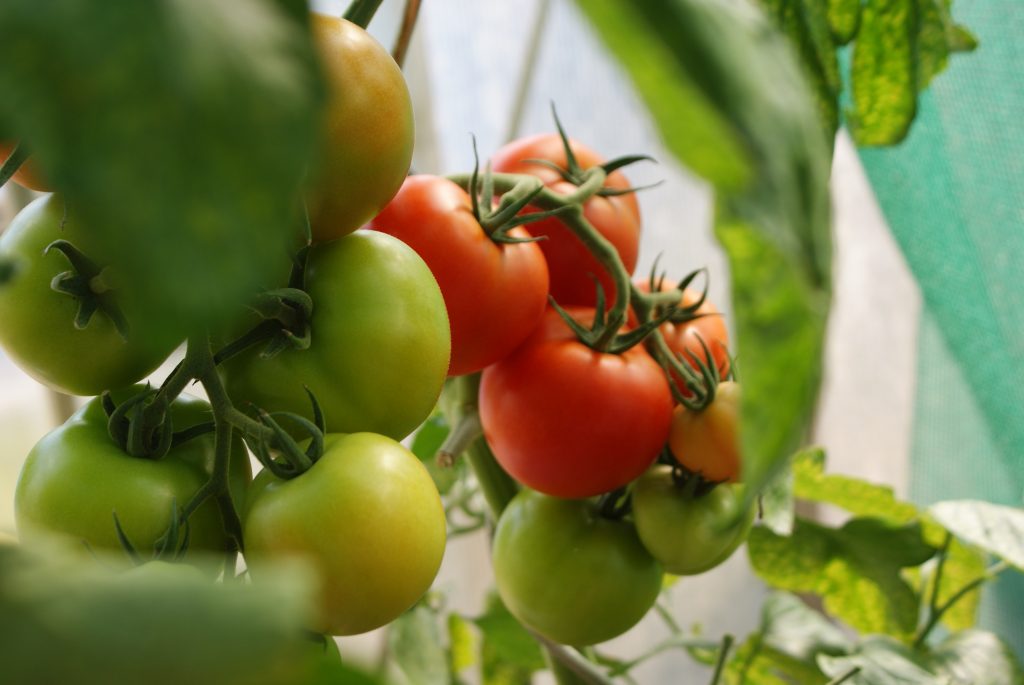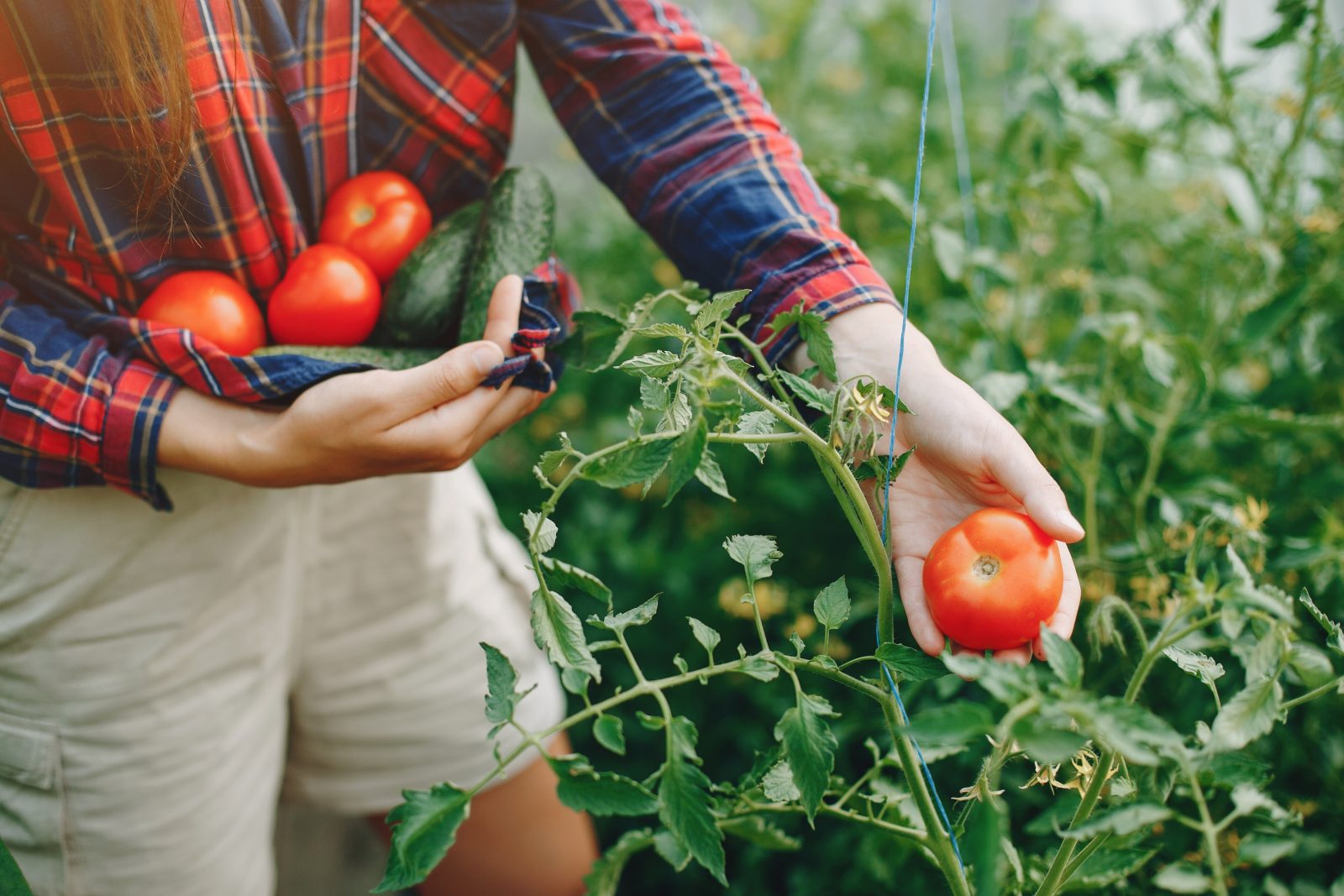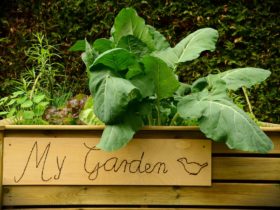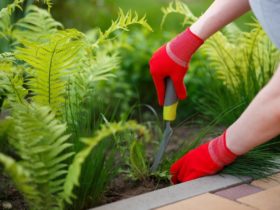It doesn’t matter whether you are a commercial grower or hobbyist, all gardeners are looking for ways to improve their yield, and to reduce the amount of time, energy, and other resources spent to cultivate their crops. Tomatoes are fruitsFruits are seed-bearing pods or capsules of flowering plants. Fruits are full of nutrients that can enrich germinated seeds. Examples of fruits are tomato, banana, watermelon, and cucumber fruits. that lots of people consume in soups, stews, sandwiches, and various cuisines. And even better, it’s one of the easiest vegetables to grow! How can you, a home gardener, improve your tomato yield even if you are in an urban area with very little space? Read this article to learn everything you need to know about square-foot gardening tomatoes.
What Is Square Foot Gardening?
The term “square foot gardening” was first used by Mel Bartholomew in 1981. As the name implies, square foot gardening is the practice of dividing your growing area into different sections, which are one foot long on each side. Square foot gardens are usually in raised beds. With this practice, you can have a small but high yielding garden. With proper planning, you can enjoy your produce year-round. This gardening technique also helps with rotating crops since you can easily keep track of the plants.
Advantages of Square Foot Gardening
Square foot gardening has several advantages over conventional practices. Here are just a few benefits:
- It helps gardeners to have a high yield with minimal effort.
- Since most square foot gardens are in raised beds, it provides better drainage of water and more room for plant roots to grow.
- Intensive planting of crops gives less room for weed growth.
- Plants like lavender, basil, etc. are naturally resistant to significant cropCrops are plants cultivated by humans for specific purposes. Crops can be made for food, medicine, flower, etc. Examples of crops are wheat, tomato, cabbage, etc. pests. Combining pest-resistant plants and other crops like tomatoes and peppers in a square foot garden makes it more difficult for pests to destroy your crops.
- When you know the space requirement of your selected crops, you can easily calculate how many plants can grow in a square and the best position for each crop.
Requirements for Growing Tomato Plants

Tomatoes are fun to grow and harvest, but they can be a bit picky. To grow the best tomatoes and to get a high yield in a square foot garden, consider the plants’ requirements. Elements like water, sunlight, spacing, and fertilizerAny material added into the soil (or sprayed on leaves) to give more nutrients to plants. Fertilizers often give Nitrogen, Phosphorus, and Potassium (NPK) to plants. Fertilizers can be organic or inorganic. are discussed below.
Space Tomato Plants Properly
Generally speaking, you should space tomatoes 2-3 feet apart. That is, no more than one plant should be grown in a square, and each crop should be two squares apart from each other. In a 4×4 square foot garden (4 rows and four columns), you can plant eight tomatoes then have other crops in-between.
Provide Support for Vines
Vine tomatoes keep growing, so they require a cage or stakes. They can grow without these supports but will cover more space. Since square foot gardens are generally purposed to get yield in a “confined” area, make sure that you provide cages for vine tomatoes so that you can use the available spaces for other crops.
Give Your Plants Plenty of Sun
Tomatoes require 6-8 hours of sunlight daily. Square foot gardens in raised beds are advantageous because a raised bed gives the plants more access to sunlight. To get the best result, construct your garden in a place with enough sunlight.
Pay Attention to Your Soil
Well-drained soil is the best soil for tomatoes. Planting tomatoes in a wet soil without adequate drainage can promote ill health of the plant. Square foot gardens come with the advantage of draining water quickly since they are usually on elevated beds. Note that you have to water your crops regularly.
Tomatoes require a slightly acidicAny material such as compost, soil, fill dirt, fertilizer, water, etc with a pH less than 7.0. Acidity in materials is usually determined through chemical strip tests or other types of chemical tests. Soil or substrate over a pH of 7.0 in the plant and garden world is usually referred to as "Acidic soil". soil (pHPotential of Hydrogen or pH is a measurement of the acidity or alkalinity of any material. pH is read from 0-14. 0-6.9 is acidic, 7 is neutral, and 7.1-14 is alkaline (or basic) of 6.0-6.8). Make sure that the pH of your square foot garden is not too high or too low. If it is not in the right range, consider adjusting it. For more help, check out our post on how to prepare your soil.
Deeper is Better
Tomatoes will grow healthier and become less susceptible to drought when buried deep in the soil. Tomato plants have tiny bumps in their stem known as “adventitious roots.” When a portion of the stem is buried in the ground, these roots develop so your tomato plants can absorb more water and nutrients.
Best Techniques in Square Foot Gardening Tomatoes
Now that you know some helpful tips to grow tomato plants let us focus on the best techniques for growing tomatoes in a square foot garden. For example, draw a 4×4 (i.e., 16 squares) square foot garden with the rows labeled as A, B, C, D, and the columns as 1, 2, 3, 4.

Recall that tomato plants require at least two feet between each other. Looking at the hypothetical garden above, you would agree that if you plant each tomato in the middle of their squares, you wouldn’t be able to plant eight tomatoes. To have eight tomato plants, you have to shift the plants close to the edge of their squares.

What varietyPlant varieties make up a species. Varieties are plants in a species that have unique characteristics from other plants in that species. For example, watermelons have varieties that are seedless. of tomato are you planting? The tomato type determines the position in which you plant it. It is best to plant vine tomatoes in the outer squares (i.e., A1, A4, D1, and D4). They can also grow in the inner squares, but make sure that you provide cages or other support so that they do not cover the empty squares in which you can plant different crops. If you don’t have supports, bushA plant without a distinct trunk, short, and has a lot of leaves (i.e. thick shrub). An example of a bush is bush tomatoes. tomatoes are best for the inner squares (i.e., A2, B1, B3, and D2). If all your tomato plants are bush tomatoes, consider shifting each crop closer to the middle of their squares.
Companion Plants for Tomatoes
In our square foot garden (i.e., the illustration above), the squares A3, B2, B4, C1, C2, C3, C4, and D3 are vacant. You will need to plant other crops in these squares so that you make good use of every part of your garden. Note that not all crop types can be near tomatoes. While tomatoes can grow amidst a lot of plants, you should choose companion plants. Companion plants assist the growth of others by providing support, attracting beneficial insects, or even providing nutrients. Some examples of companion plants for tomatoes and their benefits are:
- Basil plants repel insects like fruitFruits are seed-bearing pods formed by the ripening of a plant pericarp after flowering. Plants produce seeds after pollination. The seeds of plants are stored in sweet and nutritious pods called fruits. flies, therefore, improving tomato health.
- Mints, bee balms, etc. improve tomato health and flavor.
- Amaranths repel some insects.
- Since beans are legumes, they can provide nutrients like nitrogen when their leaves rot.
- Garlic repels red spider mites.
- Lemongrass can grow near vine tomatoes since it repels some insects and can grow in partial shade.
Some examples of crops that should not be planted in the same garden with tomatoes include:
- Corn: The corn earworm (a pest) is disastrous to many crops, including tomatoes.
- Fennel secrets a substance that inhibits the growth of various plants, including tomatoes.
- Cabbage, turnip, and broccoli, stunt the growth of tomatoes.
Since square foot gardening is a compact form of gardening, you have to be careful with the kind of crops you decide to grow together, keeping the previous considerations in mind.
Conclusion
Square foot gardening is the practice of dividing an area into squares of one foot per side to minimize resources and energy spent on gardening. With this simple gardening technique, you can have a high yield with little effort. Tomatoes will grow better in square foot gardens when they are spaced with 2-3 feet between each crop.
If you want a better tomato harvest, your entireWhole; margin not indented. garden should have 6-8 hours of sunlight per day. You should also provide cages for your vine tomatoes so that they do not cover other empty spaces.
In your square foot garden, other crops, called companion plants, can be planted with tomatoes to get healthier plants and an overall better yield.
What have you learned? What do you think about our hypothetical square foot garden? Share your thoughts in the comment section below.











Leave a Reply